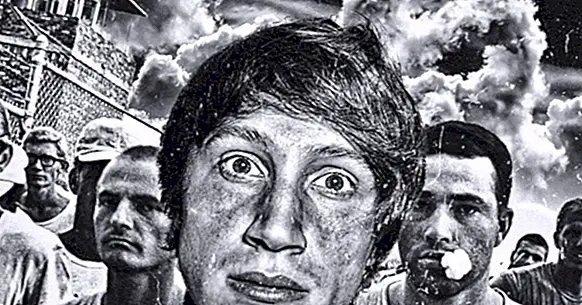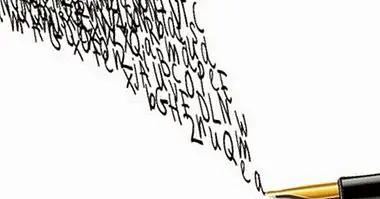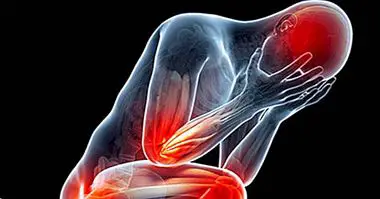What would happen if the groups suffered personality disorders?
We are social beings, so it is impossible to ignore the role of groups in our lives. Be groups of belonging, such as family, or reference, as an urban tribe, We are always in direct relationship with some type of group . This fact added to the Gestalt principle of "the whole is more than the sum of the parts", justifies the group as a unit of analysis and the theoretical-practical paradigm of the Psychology of the Groups .
What would happen if a group of people had a personality disorder?
Understanding the group as greater than the sum of its members implies that you can not understand the group as an extrapolation of the individual behaviors of the people who make it up . It is not even possible to dictate that the same person develop the same processes individually and in groups; and hence the therapeutic role of the groups.
Now, if they can be therapeutic, can pathological groups also be configured? With this issue on the air, let's get into group vision and see what features the groups could have if they fell ill. Who knows ... will we be part of a pathological group?
It may interest you: "Personality disorders: myths and realities"1. Paranoid Group
The paranoia it appears when delusions lead to a distortion of reality and mistrust. In a group vision, translates as a group with a deficit of feedback both intra and intergroup . With this, we refer to the fact that no external feedback is offered, nor between the members themselves.
Therefore, the group develops a lot of inferences for not contrasting the information, does not express its interpretation and does not know if it is correct. This makes the group distrustful, source of rumors and multiple versions of the same one or. They are stuck in a phase of creating standards and trust, constantly testing the opinion and commitment of its members to be able to say "yes, that's the way things are" and gain security.
2. Schizoid Group
One may think that a person schizoid he can not integrate a group, due to his indifference towards social relations. Now, let's have group vision and observe a schizoid "group".
This isolation would manifest at the group level by a rigid and impermeable membrane. The group membrane is the structural element that helps define the boundaries of the group and regulate its communication with the outside . In this way, while it gains rigidity, the interaction of the group with its environment is impeded. In this case the effects are bidirectional; not only is information not given from the group as in the paranoid, but it is not received either.
3. Schizotypal Group
Surely you have ever connected in a group that before a phrase without meaning, all have laughed out loud and you have asked "what happens here?". It is one of the forms of expression of the group culture, of how the group evolves over time gaining consistency as a particular entity through rules, forms of relationship, roles, themes, etc; characteristics.
It could be understood as the reality of the group. However, if this reality becomes complex and begins to differ from the exogrupal -exterior to the group-, we are in a schizotypal group , with a distortion of reality; a group that there is no where to understand it because it seems that it does not speak our language.
4. Antisocial Group
One of the reasons for forming groups is the search for security; the group as a lifesaver. Have the opportunity to gain confidence with a number of people it provides us with a safe environment where we can relate . To do this, it is necessary to create group norms, be they explicit -expressed verbally- as implicit -those that are not said but everyone knows-.
However, the antisocial disorder has certain problems with the norms, and in antisocial groups concretely with the norms of intergurpal interaction. At the same time that the group establishes intra-group norms to ensure their relationship, it also establishes them intergroup to ensure how to interact with the environment. If the latter fail, we find a group that violates the integrity of others, that does not respect the group membrane of other groups and dysfunctional forms of exogrupal relationship.
5. Limit Group
The borderline disorder is one of the most complex at the individual level and also in its group development. A limit group is a group with a group activity focused on the affective level . It is a group that does not manage and only expresses, so that it is characterized by not having space for reflection and only for action.
This leads to impulsive relationships arising from the emotional climate of the group at that time, very dysfunctional intergroup since they do not take into account neither semantics nor communicative pragmatics . That is, they do not control what they express or how they express it, and they do not deal with what to do with the bomb that they have just released, leading them to self-destructive relationships with the environment and with the group itself.
6. Narcicist Group
The phrase of the narcicismo explains that the success is everything: "the end justifies the means". For this reason, the narcissistic group is a group totally oriented to the task, but the objective is neither productivity nor performance, but the status that is achieved by performing the task .
They are groups that live in a continuous relationship of competitiveness, since their group identity is based on the accomplishment of the task and on the social comparison with other groups. Wow, if I get all my goals and then compare myself with those who have not, I will value myself positively. Many may have remembered some work groups in the studios or in the labor sector, those of which one thinks "how little it costs them to step on their heads".
7. Histrionic Group
The histrionic also he loves being the center of attention , but in this case emotionally. This fact already characterizes the histrionic groups, their socio-emotional orientation. If you give a task to perform the histrionic groups, do not wait to see it finished, since they will run aground in expressing the emotions that awaken in them that task.
Just that is another dysfunction, a continuous emotional expression, but without management, because the attention would end if they resolved the emotional conflicts . In this case, the emotional climate becomes key again, the central theme of intra- and intergroup relations, as well as recreate conflicts without putting an end to them.
8. Grupo Evitativo
This type of group resembles the schizoid in that it does not maintain exogroup relations. This is explained in that at an individual level, the avoidant disorder is characterized by social withdrawal due to fear of rejection . Understanding the group level, the group anticipates negative interactions intergroupalmente, so that its membrane is rigid and impermeable.
However, all their interest lies in these interactions with other groups, even though they do not have them, characterizing their internal relationships through intergroup communication. The fact that they talk about something they do not know implies that distort their knowledge and reality of the other groups . In this way they live in a constant social comparison between what "we are" and what "they are", from which they make up their structure. You may be resounding some groups that once in them, they only talked about another group!
9. Dependent Group
These groups could be confused with subgroups, since they always need to alienate other groups. The dependent group is characterized by subordination to other groups and by an intergroup communication with a feedback not realistic The subordination is given by not having a clear or excessively delegative leadership, which does not assume responsibilities and leaves the group without premises to follow.
In this context, group processes are delegated to other groups, such as task management or decision making. In addition, there is a need to stay connected with the other group, so feedbacks are not established and much less if they are negative. That is to say, the group can be suborned to another that can be leading to ruin and not saying anything; I shut up the collision with the iceberg and Titanic sunk!
10. Obsessive-Compulsive Group
If something characterizes obsessive-compulsive disorder, it is cognitive rigidity in guidelines and behavior compulsion . Now, with group vision that rigidity is transferred to the structure of the group. The TOC groups would be those with a large number of rigid norms, both prescriptive - what should be done - and proscriptive - what should not be done.
As long as they are transgressed, they will have serious sanctions, with a considerable reduction in status . Likewise, they also have rigidity in roles, defining what position and what function each member fulfills. Therefore, they are groups in which the socialization of new members is difficult and in which structural rigidity also regulates inflexible forms of intergroup relations.
Conclusions and nuances
The previous classification it is not diagnostic for groups , but it can be used to take into account how structural and procedural alterations can cause group dysfunctions.
Realizing when the rules of the working group become strict, how the family is the main theme are other families or how with the friends the conflicts that arise are discussed and managed, but without a clear intention to solve them. This is how it can be observed that a group can be pathological , see that the group itself has personality and, ultimately, bring that group look.
Bibliographic references:
- Gil, F. and Alcover, F. (1999). Introduction to Group Psychology. Madrid: Pyramid.
- Palacín, M. and Aiger, M. (2014). Group communication. In R.Martínez and J. M. Guerra (Coords.), Psychosocial aspects of communication (Chapter 14, pp. 193-206). Madrid: Pyramid.
- Sánchez, J. C. (2002). Psychology of the groups. Theory, processes and applications. Buenos Aires: McGraw-Hill.



















